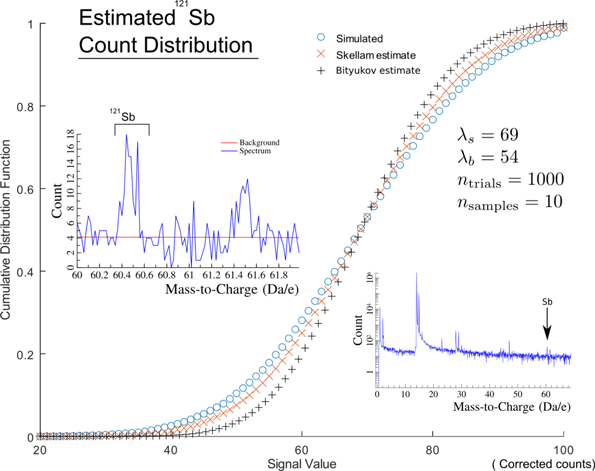Article contents
Processing APT Spectral Backgrounds for Improved Quantification
Published online by Cambridge University Press: 19 August 2020
Abstract

We describe a method to estimate background noise in atom probe tomography (APT) mass spectra and to use this information to enhance both background correction and quantification. Our approach is mathematically general in form for any detector exhibiting Poisson noise with a fixed data acquisition time window, at voltages varying through the experiment. We show that this accurately estimates the background observed in real experiments. The method requires, as a minimum, the z-coordinate and mass-to-charge-state data as input and can be applied retrospectively. Further improvements are obtained with additional information such as acquisition voltage. Using this method allows for improved estimation of variance in the background, and more robust quantification, with quantified count limits at parts-per-million concentrations. To demonstrate applications, we show a simple peak detection implementation, which quantitatively suppresses false positives arising from random noise sources. We additionally quantify the detectability of 121-Sb in a standardized-doped Si microtip as (1.5 × 10−5, 3.8 × 10−5) atomic fraction, α = 0.95. This technique is applicable to all modes of APT data acquisition and is highly general in nature, ultimately allowing for improvements in analyzing low ionic count species in datasets.
- Type
- Software and Instrumentation
- Information
- Copyright
- Copyright © Microscopy Society of America 2020
References
- 10
- Cited by





